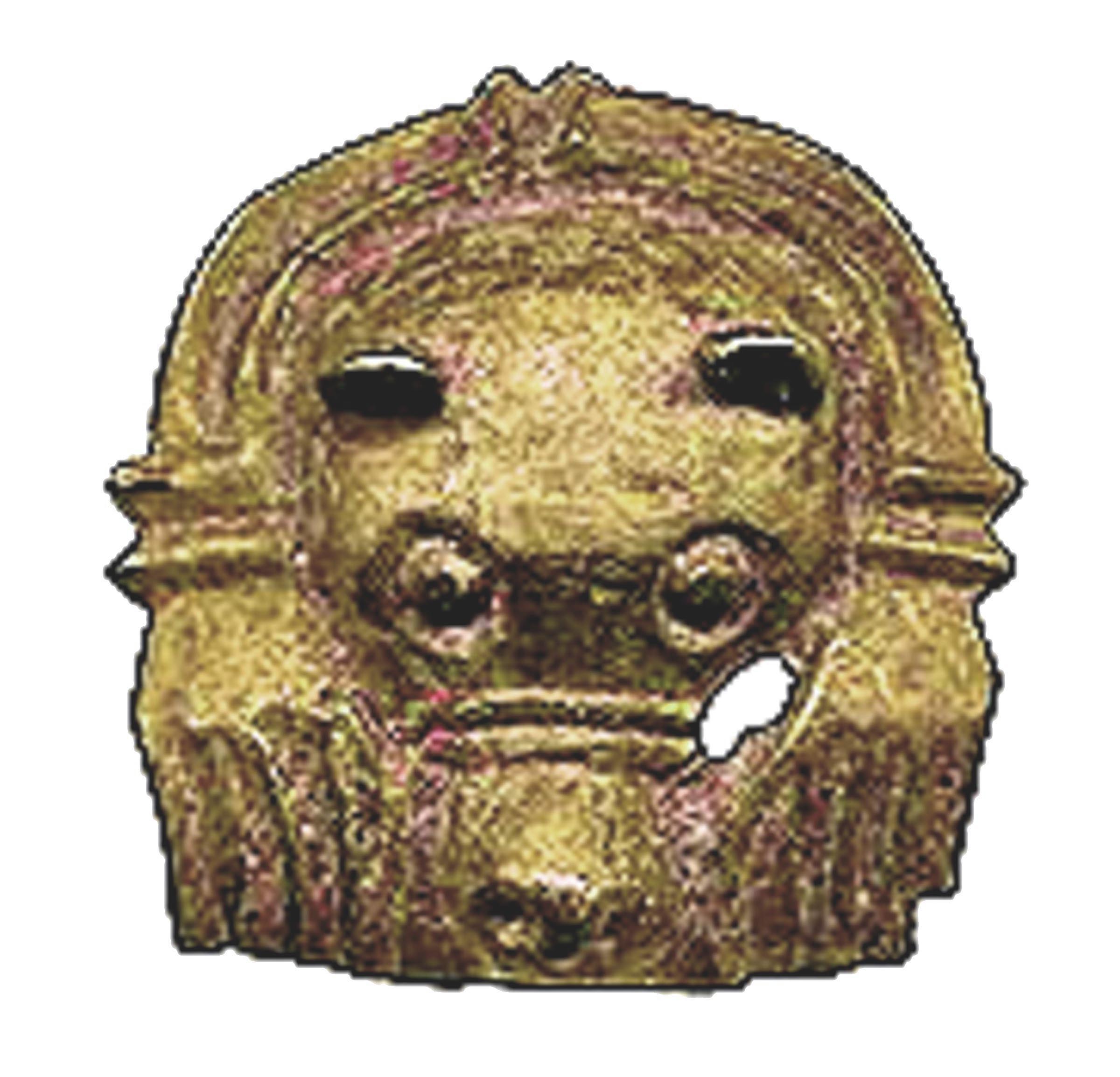

SHARING THE WORLD WITH BEARS
Powerful and magnificent to admire, bears are at the heart of some of the oldest forms of human cultural activity. Throughout the forested zones of the northern hemisphere, the Bear is often the principal other-than-human person, sometimes an ancestor, always the Master of the Forest with a leading role in managing life in the taiga. The Bear is associated with certain elements of the landscape—mountains, buttes, mesas, lakes, rivers and caves—that connect the earth-surface world to the sky-world and the underworld. The bear’s knowledge of the forest makes him a resource for medicine. The bear's hibernation cycle enables symbolic connection to the seasons and the sun, while the emergence in spring of the bear with cubs connects her to fertility.

BEAR CEREMONIALISM refers to a large number of traditional practices by which indigenous peoples across Eurasia and North America have for centuries maintained harmonious relations with bears with whom they share the world. Some peoples carve images of bears or paint such images on their clothing, dwellings and bodies. Others value and preserve parts of a bear such as claws, lips, canine teeth, penis bones and skulls. Still others do homage through songs and stories that claim kinship with the bear. Some peoples entirely refuse to hunt bears. Among other peoples, the Bear is understood to offer himself to men in death. This death is followed by an elaborate ‘sending home’ ceremony, in which the bear is made a guest in the house and celebrated for one or more days with songs, dances, and folk drama, before being sent back to his sky-home.
THE CONTINUING IMPORTANCE OF BEAR CEREMONIALISM
It has been nearly a century since A. I. Hallowell's classic work first introduced the academic world to bear ceremonialism as a circumpolar phenomenon. 1 Hallowell’s bear ceremonialism study later led him to appreciate the fundamental difference between Western and indigenous ways of seeing the world. Indigenous ways of seeing the world tend to understand not only humans as persons but some other beings as well, such as bears, who are 'other-than-human persons'. Such an understanding is derived from a tradition of observing interactions that shape both observer and observed in what has been called a "relational ontology". 2 This understanding is often expressed in bear ceremonial practices, personal and traditional narratives, songs and other forms of expressive culture that encode beliefs about bears.
Now climate change, deforestation, and the destructive exploitation of subsurface resources are rapidly transforming the physical environment just as the last generation of elders for whom bear ceremonial traditions were a vital presence is passing. As a result, bear ceremonial traditions everywhere are threatened. In some places they have been extinguished. The social and cultural consequences of this two-fold loss are being felt across the North.
THIS PROJECT

The goal of this NSF project is to develop and widely share a broad anthropological understanding of the cultural ways through which circumpolar indigenous communities have learned to share the world with bears. The present project emerged from a long-term engagement with local indigenous Khanty and Mansi communities of western Siberia, whose lands are being rapidly transformed by petroleum development, and whose bear ceremonial traditions were at different stages of survival and revival. In the next two years we aim to reach out to Native American and First Nations communities, whose concern has been indicated by the unique Grizzly Bear Treaty of 2016, initiated by the Piikani First Nation of Canada and signed by representatives of more than a hundred tribes.3 Perhaps we may soon see the creation of an international, multidisciplinary indigenous-led forum for dialogue on sharing the world with bears.
EXPLORING THIS WEBSITE
This website serves as the public face of the project’s bear ceremonialism research.
- It provides some discussion of concepts and questions important for understanding bear ceremonialism, such as “other-than-human” persons and Cultural Keystone Species.
- It is organized geographically, beginning with the bear ceremonies of the Western Siberian Khanty and Mansi peoples, but will eventually include traditions of other Eurasian and North American indigenous nations.
- It was developed with the participation of indigenous expertise.
- It is fully bilingual, even to the captioning of visual elements, so that all circumpolar peoples may have access to it, both in North America, where the principal shared language is English, and in Northern Eurasia, where Russian is the predominant shared language.
- The media-rich individual pages feature extensive audio and video documentation of bear ceremonialism, photographs and discussion of history and lifeways, and personal and traditional narratives.
- It publishes for the first time trilingual bear ceremonial texts (native language, Russian and English), transcribed and translated from actual bear festival ceremonies, elements of which appear on the page in video.
- It is designed to be accessible on platforms ranging from laptop to tablets and smartphones.
ACKNOWLEDGEMENTS

This website and the research supporting portions of the material it contains is funded by a grant to New Mexico State University from the National Science Foundation, Award Number 1724508, Office of Polar Programs, under the title "An Anthropological and Linguistic Investigation of Arctic Ceremonial Traditions," and directed by Dr. Andrew Wiget. The project team members include Olga Balalaeva, Marta Csepregi, Tatiana Moldanova, Timofei Moldanov, Svetlana Popova, Agrafena Sopochina, and Elena Surlomkina. Bear on right side of header: "Drawing of Zuni Bear Design with Heartline" Credit: Andrew Wiget.
1 Hallowell, A. I., 1926. Bear ceremonialism in the northern hemisphere. American Anthropologist, n.s., 28: 1-175; Hallowell, A. I., 1960. Ojibwa ontology, behavior, and world view. In Contributions to Anthropology: Selected Papers of A. Irving Hallowell. Edited by Raymond D. Fogelson, pp. 357-390. Chicago: University of Chicago Press.
2 Willerslev, R., 2007. Soul hunters: hunting, animism, and personhood among the Siberian Yukaghirs. Berkeley: University of California Press.77, 116 ff; T. Ingold. 2004. A circumpolar night's dream. In Figured worlds: Ontological obstacles in intercultural relations. Edited by J. R. Clammer, S. Poirier and E. Schwimmer, pp.25-57. Toronto: University of Toronto Press; Hill, E., 2011. Animals as agents: Hunting ritual and relational ontologies in prehistoric Alaska and Chukotka. Cambridge Archaeological Journal 21: 407-426; Clark, D. A., and D. S. Slocombe. 2009. Respect for grizzly bear: an Aboriginal approach for co-existence and resilience. Ecology and Society 14(1): 42. [online] URL: http://www.ecologyandsociety.org/vol14/iss1/art42/
3 Piikani Nation, 2016. The Grizzly: A Treaty of Cooperation and Cultural Revitalization and Restoration. (Accessed online at: https://www.piikaninationtreaty.com/the-treaty)

